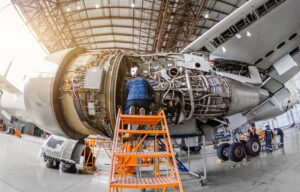Utilizing The Power Of Metrics To Enhance Restaurant Efficiency And Profitability
2 min read
In today’s fiercely competitive restaurant industry, tracking key performance indicators (KPIs) is essential for long-term success. These metrics provide a comprehensive view of financial health and operational efficiency, empowering managers with the data needed to make informed, growth-driven decisions. When properly utilized, KPIs can enhance profitability, streamline processes, and improve overall restaurant performance.
Financial KPIs form the backbone of restaurant evaluation. Metrics such as Gross Profit Margin and Net Profit Margin assess profitability and cost efficiency, helping managers identify financial strengths and areas needing cost control. Regularly analyzing revenue, expenses, and net income enables better budgeting and more effective expense management.
Operational metrics are equally crucial for maintaining efficiency. Key indicators like Table Turnover Rate and Inventory Turnover Rate offer valuable insights into resource allocation. For example, optimizing table turnover during peak hours can significantly boost revenue, while precise inventory tracking minimizes waste and ensures stock levels align with customer demand. Incorporating advanced solutions, such as third-party delivery reconciliation software, can further streamline inventory and delivery operations, increasing overall efficiency.
Technology has become a game-changer in restaurant management. Digital tools for payment processing, order tracking, and delivery coordination help reduce manual errors while enhancing financial accuracy. Automating administrative tasks frees up staff to focus on delivering outstanding customer experiences.
Labor-related metrics, including Labor Cost Percentage and Employee Turnover Rate, are essential for optimizing staffing levels and controlling wage expenditures. Efficient labor management ensures consistent service quality while keeping costs in check.
Customer-centric KPIs, such as Customer Satisfaction, Net Promoter Score, and Customer Retention, provide direct insights into guest experiences. Satisfied customers are more likely to return and recommend the establishment, fostering long-term loyalty and sustainable business growth.
Additionally, food cost metrics like Food Cost Percentage and Menu Item Popularity directly impact profitability. Regularly analyzing these figures enables restaurants to develop strategic menus that appeal to customers while maximizing revenue.
By consistently monitoring and acting on KPI insights, restaurants can refine operations, reduce costs, and drive success. To explore how KPIs can elevate restaurant performance, check out the infographic below.
Content provided by Delaget






